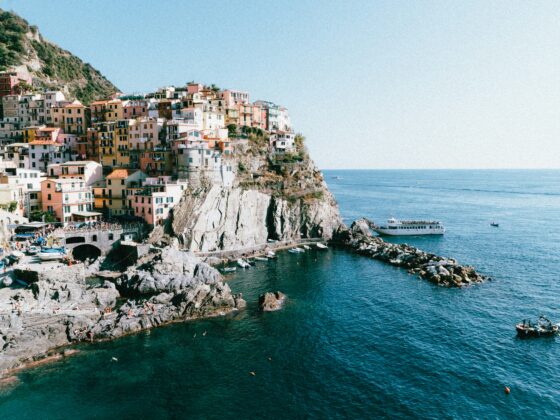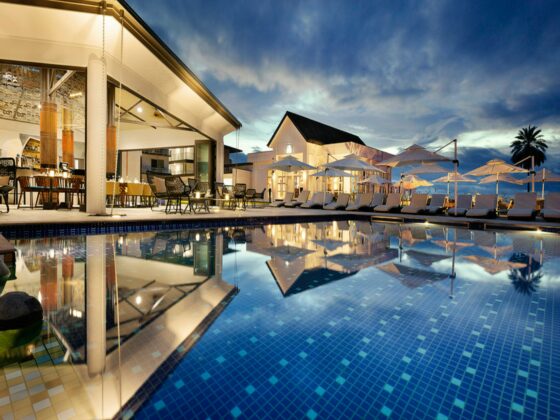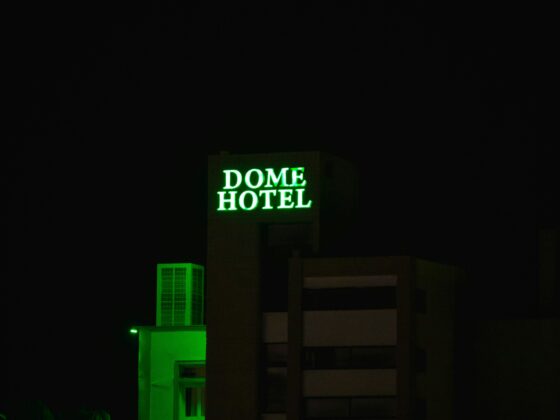I recently met with a hotel owner whose enthusiasm for the design of his upcoming hotel renovation was infectious. Think high-end finishes, custom furniture, and curated moments at every turn. Then came the budget: firm, finite, and far from matching the vision. And that’s not unusual. In fact, it’s common. The good news? These goals aren’t incompatible. But success comes down to strategy.
Here’s the truth that might surprise you: you don’t need a massive budget to make a memorable design impact. What you do need is a clear process, sharp priorities, and an experienced team that knows how to stretch every dollar. Whether launching a boutique hotel or renovating a branded property, this is what your interior designer wants you to know: Good design isn’t about what you spend. It’s about how you spend it.
Laying The Groundwork
Every hotel project begins with a vision. But vision without direction can quickly spiral. That’s why my first question to clients is always, “what’s the ultimate goal of the design?” Sometimes it’s about guest connection to the locale. Other times, it’s Instagram-able interiors or brand immersion. Establishing this north star is essential because it becomes the lens through which every decision is made.
One tactic I like to use with a client upfront is a visual audit. I ask them to share images of spaces they love, and ones they don’t. This isn’t about replication; it’s about decoding their design language. Maybe they’re drawn to texture-rich environments, moody palettes, modern lines, or copious natural light. The goal is to go beyond the aesthetic and uncover the emotional drivers behind their preferences. Why do they think this particular lobby feels warm and inviting? What makes a guest room feel elevated but homey?
These conversations help us translate abstract preferences into actionable design strategies. For example, if a client gravitates toward precedents with natural materials and a calm aesthetic, we might explore biophilic design elements, tactile finishes, or natural lighting to achieve a similar effect. We can also cut out time wasted suggesting design choices that go in the opposite direction. Equally important are the spaces that don’t resonate. These often reveal as much, if not more, about a client’s taste and brand positioning. By understanding what evokes discomfort or feels off-brand, we avoid costly missteps down the line.
Once the ultimate goal is in place, the next step is reality. Before any design work begins, it’s important to align two key factors: budget and schedule. A clear, defined budget doesn’t inhibit creativity; it sharpens it. Designers are trained to do our best work when we know the financial guardrails. Similarly, a practical schedule can unlock smarter sourcing. Unrealistically short timelines often mean air freight, rushed labor, and limited product availability—all of which add cost. With more lead time, we can make better choices and prevent reactive, expensive solutions.
It’s also critical for hoteliers to know the terrain ahead. The design process typically unfolds in phases: concept, design development, documentation, and construction administration. Each phase matters, and each has budget implications. Concept sets the tone, design development refines layout and materials, documentation creates the guidebook, and construction administration oversees the execution. Clients who understand these stages are more empowered to ask the right questions at the right times and make better decisions at every turn.
Finally, it’s crucial to take time to consider operational expectations. How many staff will the space need to support? What kind of wear and tear is expected? How are the back-of-house needs addressed? These elements directly impact material selections, layout planning, and long-term maintenance costs as well as improve employee satisfaction—resulting in better retention and fewer training costs over time.
The First Conversations
The early conversations between client and designer are some of the most important because this is where strategy begins to take shape. With vision and budget on the table, it’s time to ask the hard questions: What do we prioritize? What’s worth the splurge? And what can flex? I encourage every client to distinguish between “must-haves” and “nice-to-haves.”
Many years ago, I was involved in the Wyndham Grand Orlando Resort at Bonnet Creek, a new build that went on hold during the recession of 2008. When the project started back up, you can believe that keeping costs down was the main focus for everyone. Knowing pockets were pinched, the hotel needed to be finished, but the wow moments could not be neglected. The team compromised on many items to stay within budget, yet collectively identified an opportunity: four oversized, sculptural chairs in the bar area. A splurge? Yes. But those chairs became a magnet. Guests gravitated toward them. They posed for pictures. The bar got tagged in posts. ROI doesn’t always show up on a spreadsheet. Sometimes, it’s earned media and memorable experiences.
That project went on to become a finalist for the Gold Key Awards for Excellence in Hospitality Design, one of the most prestigious recognitions in our industry. Presented by Boutique Design Magazine, the Gold Key Awards celebrate the best in hospitality interiors worldwide, with a jury of owners, operators, developers, and design leaders evaluating creativity, innovation, and functionality across categories. Being a finalist put our work in the company of luxury brands with often much larger budgets.
Strategies for Budget-Smart Design During the Design Process
Once conversations are had and priorities are set, the design process becomes about transformation. This is where strategy and creativity meet, and lines on drawings become price tags. There are a few specific strategies that can elevate this process while maximizing budget.
The most classic of which is paint—a designer’s secret weapon. A dramatic contrast at the right moment—a dark wall at entry, a tonal trim, a color that shifts with light—can sometimes do more than an expensive finish. At the Mayflower Hotel, Autograph Collection, we color-drenched the room foyers—both walls and ceilings—creating a dramatic change in aesthetic from the neutral corridors. The foyer becomes its own room, ultimately, making the guestroom feel more residential and luxurious. We continued the paint onto the baseboards and crowns throughout the rest of the room in the same shade to unify the space and create a feeling of richness without added cost.
Furniture and art choices matter, too. At the Moxy Virginia Beach Oceanfront, we sourced reclaimed furniture with double duty, including vintage beach chairs that offer extra seating while also functioning as creative wall art when not in use. This saved money and added authenticity. In other properties like AC Kingston and Beaches Negril, we brought in local artists to infuse soul into the space. Sometimes, blank spaces are needed for the art to be most impactful. By removing some of the higher-end finishes in key spots, you’re creating a canvas for the artist’s work to shine. The result? Unique, story-driven interiors that didn’t blow the budget.
Vendor collaboration is key here. Design always thrives when we’re given the opportunity to involve vendors early because they’ll tell us what works, what doesn’t, and how to streamline. In one recent case, we knew we needed to give the guestroom casegoods design more detail to tie in with the property’s traditional aesthetic, however the budget didn’t allow for things such as ornate hardware or changing the finish. Working with the experienced casegood vendor, they were able to help add design to the pieces without changing the cost. Simple techniques like recessing the dresser sides and drawer fronts by ¼ inch and shifting the shelving layout on the interior of the armoire to allow for more storage made the package design more authentic and functional at no additional cost.
The Final Stretch
Design on paper is one thing. Design on site is another. Execution is where it all comes together—or falls apart. And more often than not, this is where budget creep threatens to undo all the careful planning. The best projects have tight-knit teams: designer, contractor, purchasing agent, and owner all rowing in the same direction.
Clear documentation and communication during construction are non-negotiable. Weekly check-ins, communication logs, site walks—all of it matters. Because when a contractor installs wall tile three feet too high, or the FF&E arrives a week before flooring goes in, it’s not just an inconvenience. It’s dollars lost. Most recently, we’ve been able to identify potential mistakes in tile pattern installation and millwork design simply because the general contractor sent photographs to the design team before setting the actual tile or having the millwork shipped. Giving the design team that one last chance to review before implementing is worth every penny and truly appreciated not just by the design team, but more importantly, the owner. That is teamwork at its best.
Construction is also where quick thinking becomes essential. During the renovation of the Glass Light Hotel & Gallery, Autograph Collection, we uncovered original, historic arches concealed behind walls during demolition. In moments like this, you don’t get the luxury of a long deliberation. We paused construction briefly, re-evaluated, and made a real-time decision to integrate the arches into the final design. Doing so not only preserved a piece of the building’s history but also added a sculptural focal point that gave the space its identity.
The true unsung hero of cost-conscious design is longevity. While you may be spending a little more for higher-quality finishes, materials that are easy to replace, or layouts that flex, a little extra now can save years of costly updates.
The hospitality industry is always evolving, and fast.
Guests today aren’t just booking a room; they’re seeking connection, experience, and authenticity. That means the most successful hotel designs aren’t necessarily the flashiest or the most expensive—they’re the ones that tell a story, reflect a place, and support operations behind the scenes. As designers, our role is to anticipate what’s next: how shifting travel behaviors, technology, and economic realities will shape the guest experience.
For hotel owners and operators, that means thinking beyond the opening day and designing for flexibility, longevity, and layered value. Budgets will always be finite. But creativity, collaboration, and clarity? Those are renewable resources. And when we tap into them early and often, the possibilities are far greater than the numbers on the page.
Reprinted from the Hotel Business Review with permission from www.HotelExecutive.com.














